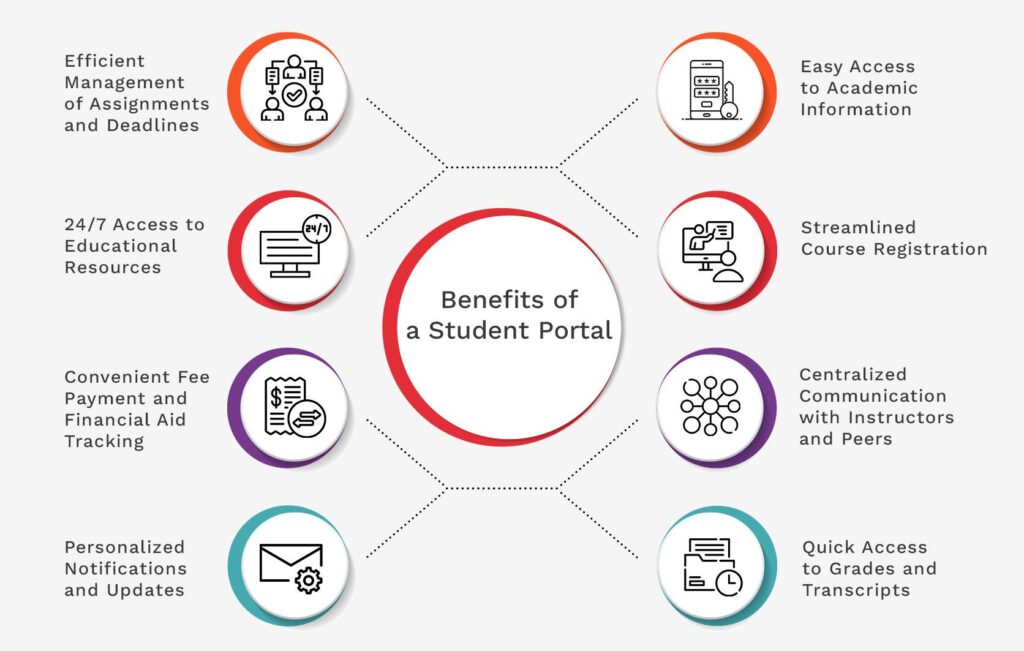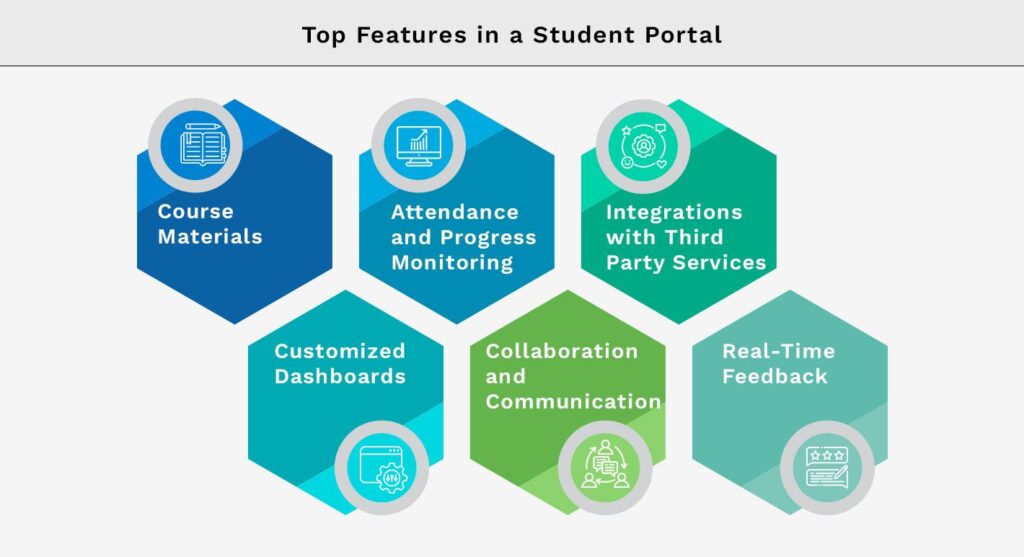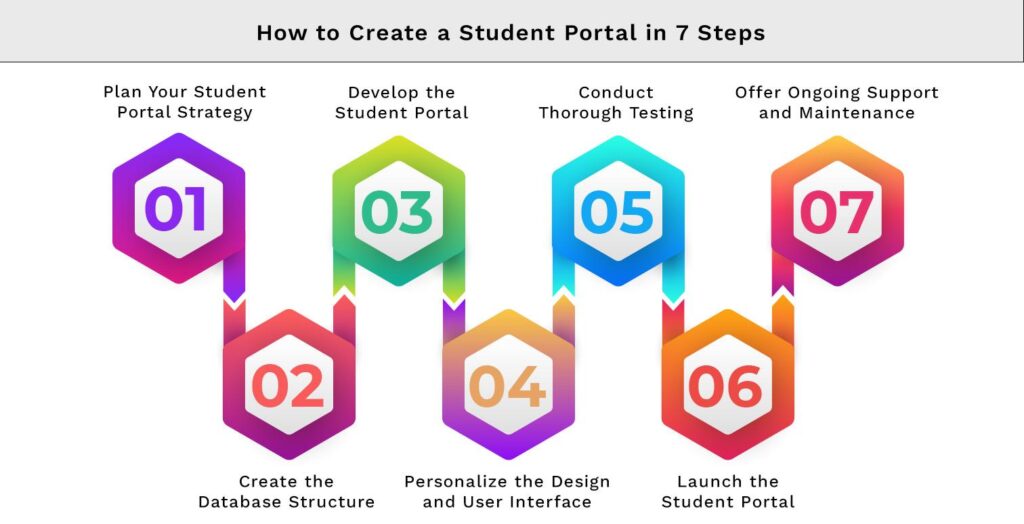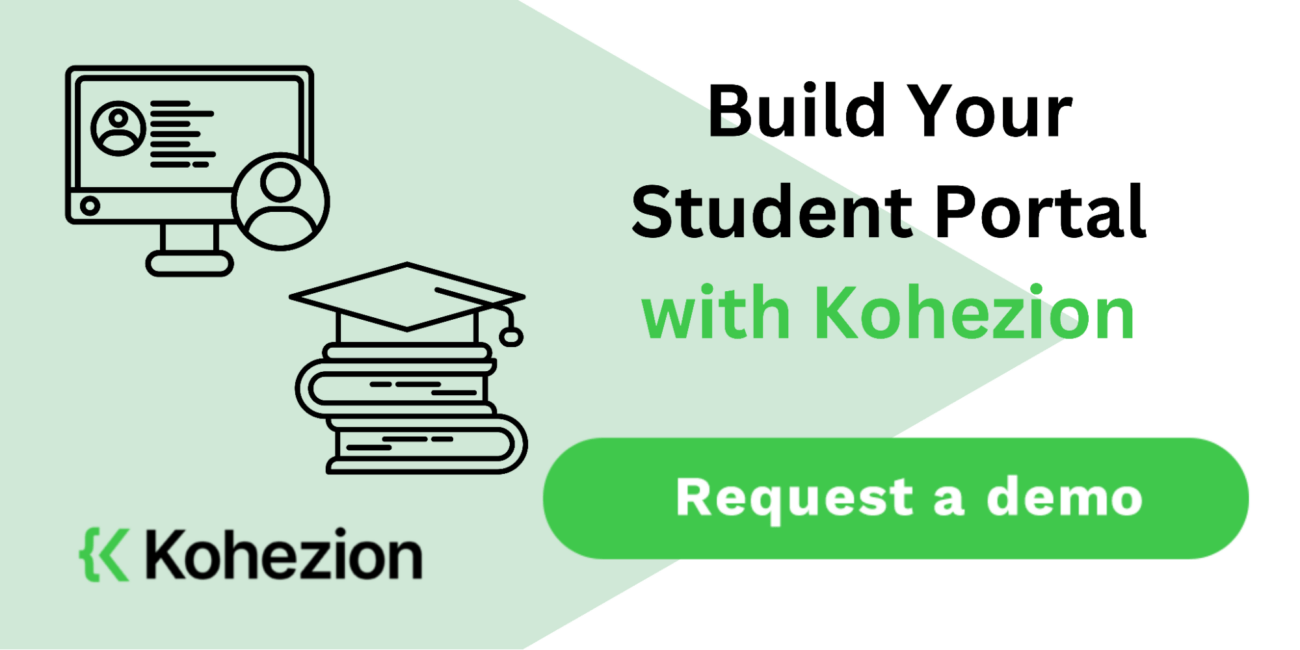In 2021, about 9.4 million students were enrolled in at least one distance education course. Student Portals are a part of Educational Technology, giving students easy access to grades, schedules, and course materials. They improve learning and help with school tasks.
Starting a Student Portal requires careful planning and execution. In this post, you'll learn about choosing the right features and making it easy to use, and find out why a well-made Student Portal is crucial for schools.
What is a Student Portal
A student portal is a central hub for students in schools. It offers a web-based educational platform for accessing important features. This includes academic records, course materials, and communication tools, all in one place.
The student portal definition highlights its role in simplifying academic and administrative tasks. It makes it easier to navigate than using multiple websites.
These portals use secure login systems to protect personal and sensitive academic information and ensure they meet data protection regulations.
A web-based educational platform allows students to manage their finances, library resources, and campus services easily. A student portal improves the educational experience and helps students stay organized and informed during their studies.
Why is a Student Portal Important
Student portals are more than just a convenience. They are key to improving Educational Efficiency and increasing Student Engagement. They give you quick access to important school information like grades and news. This helps create a supportive learning space and shows the importance of your education.
These portals also build trust and loyalty between students and schools. They make things like signing up for classes and paying fees easier, which allows staff to focus more on helping students have a better experience.
Student portals offer personalized dashboards and are easy to use on mobile devices. Since many students use different devices on campus Wi-Fi, it's important to ensure they can all access the portal. This makes it simpler to get to important school resources whenever you need them.
In the end, the Importance of Student Portals is clear. They bring all the resources and info you need together. They help create stronger connections and support a more active learning approach. Their new features and customization options make a big difference in how well and happy students do.
Benefits of a Student Portal
Using a student portal can greatly improve your learning experience. It makes it easier to access important school info, improving your Academic Efficiency. You can see your class schedule, grades, and transcripts in one spot. This saves you time and lets you focus on your studies.
Easy Access to Academic Information
A student portal gives you quick access to key academic materials. You can easily check your course details, resources, and upcoming tests. No more searching through different systems.
Streamlined Course Registration
Registering for classes is easier with a student portal. You can sign up for courses and apply for financial aid online. This saves you time and reduces the workload for school staff.
Centralized Communication with Instructors and Peers
Many portals have messaging and forums for talking with teachers and classmates, which helps with teamwork on school projects.
Quick Access to Grades and Transcripts
A student portal allows you to quickly see your grades and transcripts. This lets you keep track of your progress and work on improving where needed.
Efficient Management of Assignments and Deadlines
A student portal makes managing assignments and deadlines easy. You can see when things are due, helping you stay organized and meet your school commitments.
24/7 Access to Educational Resources
Having 24/7 access to learning resources is super convenient. You can use them whenever you want, fitting your study schedule. This helps you learn in a way that works best for you.
Convenient Fee Payment and Financial Aid Tracking
Student portals make paying fees and tracking financial aid easy. You can use different payment methods, simplifying the process for both you and the school.
Personalized Notifications and Updates
Lastly, personalized notifications keep you updated on important news and deadlines. This helps you stay on top of your school life and meet your goals.

Top Features in a Student Portal
Student portals have key features that make learning online better. These features help students stay engaged and do well in school. Knowing these features can help you pick the right portal for your needs.
Course Materials
Having course materials in the portal makes learning easier. It keeps all your study materials in one place. This makes studying more efficient and enjoyable.
Attendance and Progress Monitoring
Tools for tracking attendance and progress are very helpful. They let you see how you're doing and how often you're there. This helps you stay on top of your schoolwork.
Integrations with Third-Party Services
Being able to connect with other services makes portals even better. These connections give you access to more tools and resources, making learning more effective and satisfying.
Customized Dashboards
Custom dashboards make the portal your own and show you what's important right away. This helps you stay organized and manage your time better.
Collaboration and Communication
These features let you join discussions, share ideas, and get help when needed. Good communication helps everyone learn together.
Real-Time Feedback
Getting feedback right away is super helpful. It lets you quickly ask questions and learn from mistakes, making learning more active and fun.

How to Create a Student Portal in 7 Steps
Creating a student portal needs careful planning and execution. Follow these steps to make a portal that meets educational goals. These steps focus on key features and user experience.
1. Plan Your Student Portal Strategy
Outline your goals and the portal's essential features. Think about what your users need. Make sure the portal supports their educational goals.
2. Create the Database Structure
Design a strong database structure to store student data securely. This will make it easy to access personal information, grades, and activity details.
3. Develop the Student Portal
Develop the portal using a suitable platform. Include features like the SmartV Login page for verification. Students should receive a verification code via email for login.
4. Personalize the Design and User Interface
Make the design and user interface user-friendly. Ensure easy navigation for students to view and update info, check grades, and sign up for activities.
5. Conduct Thorough Testing
Test the portal thoroughly before launching. Check if course registration, activity sign-up, and academic record access work well.
6. Launch the Student Portal
After testing, launch the portal. Inform users about accessing it, including default passwords and login settings.
7. Offer Ongoing Support and Maintenance
Set up a system for ongoing support and maintenance. Regular updates and help keep the portal user-friendly and ensure it meets evolving needs.

Start Building Your Student Portal with Kohezion Today
Creating a student portal with Kohezion is a great way for schools to improve their online presence. The Online Portal Builder lets you make a portal that fits your school's needs. It's easy to use, even if you're not tech-savvy.
The drag-and-drop feature makes building your portal simple, allowing you to add features quickly. Kohezion also ensures that your portal can grow with your school, keeping student information safe.
Kohezion offers lots of resources and support to help you. This makes it easier to get the most out of your portal. With these tools, you can create a portal that engages students and improves their learning experience.
Conclusion
Creating a student portal is a big step forward in education. It makes it easy to access important resources and information. This system helps manage relationships between students, mentors, and staff smoothly.
Looking at the summary of student portal benefits, we see how important they are. Especially now, with online learning becoming more common due to COVID-19.
The right features make the portal user-friendly. It lets users quickly find what they need and communicate easily. It also helps manage courses, profiles, and feedback, making everything organized and collaborative.
As we look to the future of educational portals, they will be key. They help keep students engaged and make processes smoother.
Following the steps will help you create a valuable tool that meets the changing needs of students and staff. If you have questions or need assistance with creating a student portal, feel free to contact Kohezion for support.
Start building with a free account
Frequently Asked Questions
To make your student portal user-friendly, focus on a clean and intuitive design that is easy to navigate. Conduct user testing with students to gather feedback on the interface and make adjustments based on their experiences. Clear instructions and support resources will help users feel more comfortable using the portal.
Conduct thorough testing before launching the student portal to identify and fix any issues. This should include functional testing to ensure all features work as intended and usability testing with real users to gather feedback on their experience. Testing the portal on various devices and browsers will also help ensure compatibility for all users.
To promote student engagement, actively communicate the portal's benefits and provide training on navigating it effectively. Regularly update the portal with new resources, announcements, and events to keep students interested. Encouraging feedback and improving based on student suggestions will also help foster a sense of ownership and involvement.
Implementing strong security measures protects student data. Encryption should be used to secure data transmission, and user authentication methods, such as multi-factor authentication, should be in place. Regular security audits and updates will also help safeguard against potential threats.
Regular updates to the student portal keep the information current and relevant. Aim to review and update content at least once a semester or more frequently if necessary. Addressing user feedback and implementing new features based on their needs will also ensure the portal remains useful.

